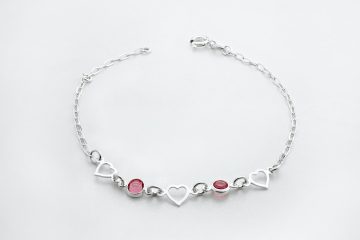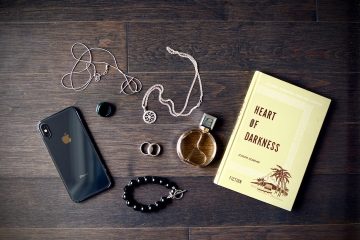Are you in the market for a stunning bracelet but unsure about the right size? Finding the perfect fit can be a bit tricky, especially when you’re not familiar with average bracelet sizes. Wearing a bracelet that is too loose or too tight can be uncomfortable and may even jeopardize the overall look and feel of your ensemble. However, fret not! In this comprehensive guide, we will delve into the world of average bracelet sizes in inches and provide you with all the necessary information to help you unlock the perfect fit.
1. Why Bracelet Size Matters
Bracelet size matters for a variety of reasons. Firstly, a well-fitted bracelet enhances the overall aesthetic appeal and showcases the piece in its full glory. Secondly, comfort is key when it comes to wearing any piece of jewelry, and a bracelet that is too tight or loose can cause irritation or even fall off. Lastly, different designs and materials require specific measurements to ensure they sit perfectly on your wrist. Understanding average bracelet sizes is crucial to ensure you make the right choice and enjoy a comfortable and stylish accessory.
2. How to Measure Your Wrist
Before delving into average bracelet sizes, it’s essential to learn how to measure your wrist accurately. Here’s a simple step-by-step guide to help you get the measurements you need:
Step 1: Obtain a flexible measuring tape or a piece of string and a ruler.
Step 2: Wrap the measuring tape or string around your wrist, just below the wrist bone.
Step 3: Make sure the tape or string is snug but not too tight.
Step 4: If you’re using a string, mark the spot where it overlaps and measure the length with a ruler.
Step 5: Record the measurement in inches.
3. Average Bracelet Sizes
Now that you have your wrist measurement, let’s explore the average bracelet sizes available in the market. Bracelets typically come in several sizes, including small, medium, and large. However, it’s important to note that these sizes may vary across different brands or countries. Here’s a breakdown of the average sizes in inches:
– Small: 6.5 inches
– Medium: 7 inches
– Large: 7.5 inches
These sizes are general guidelines, and it’s always advisable to refer to specific size charts provided by the jewelry manufacturer or retailer. Keep in mind that bracelets with adjustable chains or extenders can provide additional versatility and flexibility in achieving the perfect fit.
4. Tips for Choosing the Right Size
Selecting the right bracelet size goes beyond relying solely on average measurements. Here are some additional tips to consider when choosing the perfect fit:
4.1 Style and Design
Different bracelet styles and designs may require specific measurements to ensure they sit correctly on your wrist. For example, a bangle bracelet typically needs to slide over your hand, while a bracelet with a clasp should fit snugly around your wrist. Consider the style and design of the bracelet you desire and choose a size that aligns with its requirements.
4.2 Comfort
Comfort is paramount when it comes to wearing any piece of jewelry. A bracelet that is too tight may cause discomfort, restrict movement, or leave imprints on your skin, while one that is too loose may slide around excessively or even fall off. Find a balance between comfort and security by selecting a size that allows you to move your wrist freely while ensuring the bracelet stays in place.
4.3 Consider the Clasp
If the bracelet you’re eyeing has a clasp, take into account the clasp size and how it affects the overall fit. Some clasps may add extra length to the bracelet, so be sure to consider this when selecting your size. Additionally, if the clasp is adjustable, you may have more flexibility in achieving your desired fit.
5. Adjusting Bracelet Size
In some cases, you may come across a bracelet you adore, but it’s not available in your exact size. Don’t fret! There are a few options to consider if you need to adjust the size of a bracelet:
5.1 Extenders or Adjustable Chains
Bracelets with extenders or adjustable chains provide the flexibility to adjust the size to your preference. These additional components allow you to lengthen or shorten the bracelet, ensuring a comfortable fit. Extenders are particularly useful if you want to wear the bracelet with different outfits or wish to accommodate any wrist size fluctuations.
5.2 Jewelry Tools and Services
If you have a bracelet that doesn’t come with adjustable features, you can take it to a professional jeweler who can make alterations to the size. They have the expertise and tools needed to resize your bracelet while maintaining its integrity and design. However, it’s crucial to consult with a reputable jeweler to ensure the alteration is done correctly.
6. Conclusion
Finding the perfect fit for a bracelet is essential for both style and comfort. By understanding average bracelet sizes, measuring your wrist accurately, and considering additional factors like style and comfort, you’ll be well-equipped to select the ideal size for your next bracelet purchase. Remember to consult size charts, explore adjustable options, and seek professional assistance when needed. With the right size, your bracelet will effortlessly enhance your outfits and become a cherished accessory in your collection.
FAQs (Frequently Asked Questions)
Q1: How tight should a bracelet be on your wrist?
A well-fitted bracelet should be snug but not too tight. It should allow you to move your wrist comfortably while staying in place. Avoid bracelets that leave indentations on your skin or ones that slide excessively.
Q2: Can I wear a bracelet that’s slightly bigger or smaller than my wrist size?
While it’s best to choose a bracelet closest to your wrist size, slight variations are usually acceptable. Adjustable bracelets or those with extenders offer flexibility, allowing you to fine-tune the fit. However, avoid significant differences as they may compromise comfort and style.
Q3: Are average bracelet sizes the same for men and women?
Average bracelet sizes can vary slightly between men and women. Typically, men’s bracelets tend to be larger, with average sizes ranging from 7.5 to 8.5 inches. Women’s bracelets range from 6.5 to 7.5 inches. However, it’s crucial to refer to specific size charts as sizes can differ depending on the brand or country.
Q4: How can I measure my wrist if I don’t have a measuring tape?
If you don’t have a measuring tape, you can use a piece of string or a strip of paper. Wrap it around your wrist, mark the overlap point, and measure the length with a ruler. Ensure the string or paper is snug but not too tight to obtain an accurate measurement.
Q5: Can all bracelets be adjusted to fit any wrist size?
Not all bracelets can be adjusted to fit any wrist size. Some bracelets may be designed with fixed sizes due to their structure or material. It’s essential to check the product description or consult with the retailer or jeweler to determine if a bracelet can be adjusted to your desired size.




